(VOVWORLD) - Located in Thuong Tin district, about 25 kilometers south of Hanoi, Quat Dong embroidery craft village is considered the cradle of embroidery in Vietnam with its brand name famous throughout the northern region and nationwide. Its reputation has remained strong since the 17th century.
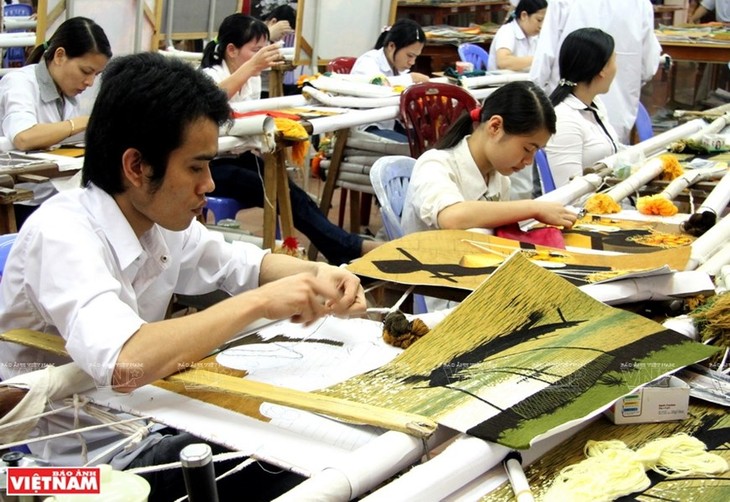 (photo: VNP/VNA) (photo: VNP/VNA) |
Quat Dong embroidery craft village in Quat Dong Commune, Thuong Tin District, is the homeland of Vietnam’s traditional hand embroidery.
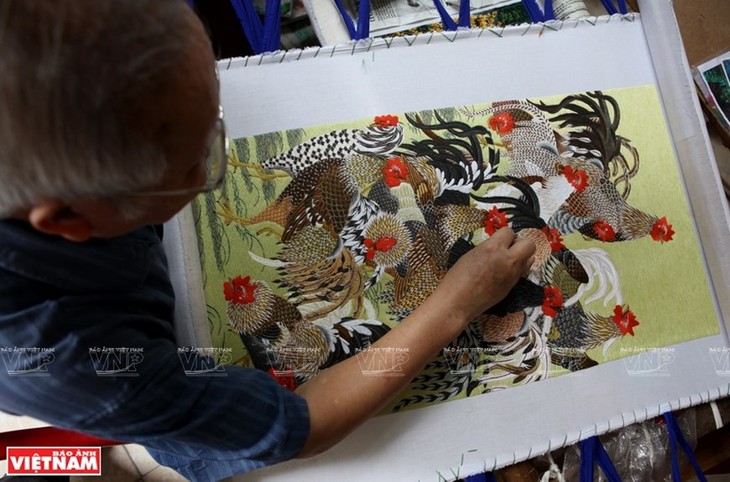 (Photo: VNP/VNA) (Photo: VNP/VNA)
|
For centuries, Quat Dong has retained the traditional features of northern villages. Under the old banyan tree at the beginning of the village is a shrine worshipping the village god, next to which is a temple dedicated to Le Cong Hanh who was honored as the master of Vietnamese embroidery.
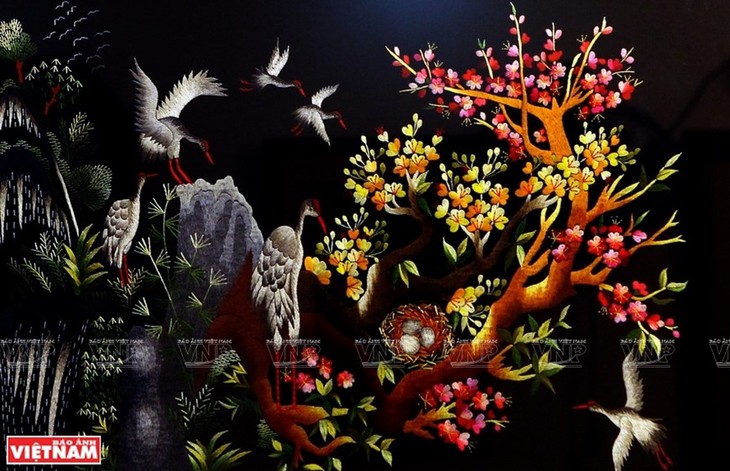 (Photo: VNP/VNA) (Photo: VNP/VNA)
|
The epitaph in the temple says Dr. Le Cong Hanh, whose real name was Bui Cong Hanh, a native of Quat Dong village, lived in the late Tran Dynasty and early Le Dynasty in the 14th century.
Hanh traveled to China as King Le Chan Tong’s envoy and learned a new embroidery technique. Upon returning to Vietnam, he taught the technique to the villagers of Quat Dong.
After the 17th century, Quat Dong embroidery spread nationwide, making Hanh the master of Vietnamese embroidery.
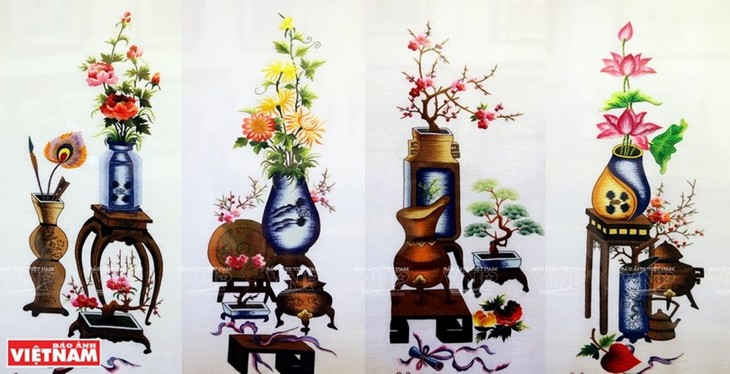 (Photo: VNP/VNA) (Photo: VNP/VNA)
|
The temple in honor of the village’s embroidery master was built more than 200 years ago. Many precious objects are kept there including steles and an ancient incense burner. The 12th day of the sixth lunar month every year is observed as the death anniversary of master Le Cong Hanh, when villagers and people from other embroidery villages nationwide offer incense in commemoration of the craft’s master.
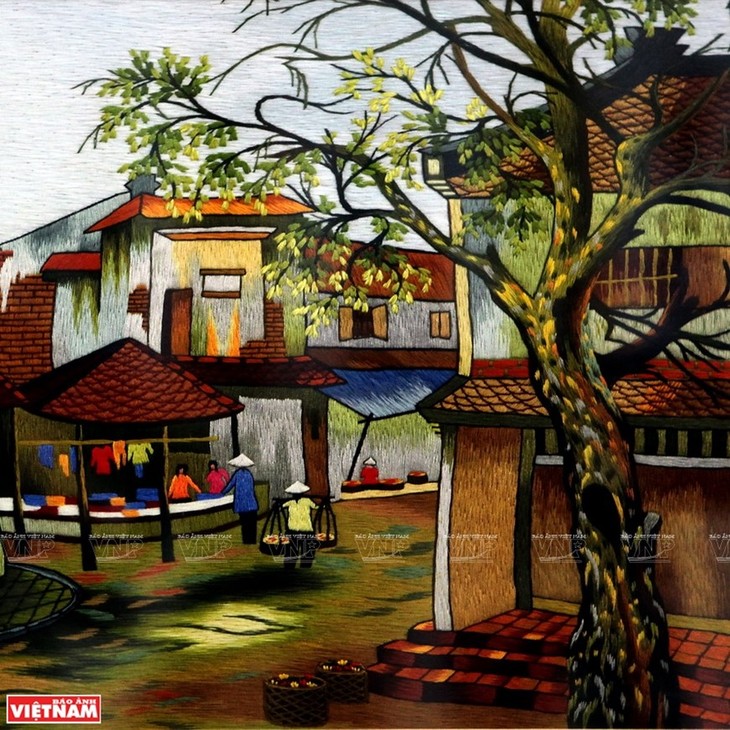 (photo: VNP/VNA) (photo: VNP/VNA) |
The major artworks of Quat Dong village feature many familiar images of Vietnam, including banyan trees, a river wharf, and scenic spots such as One Pillar pagoda, Ngoc Son temple, Hong Thai communal house and Hue’s imperial city.
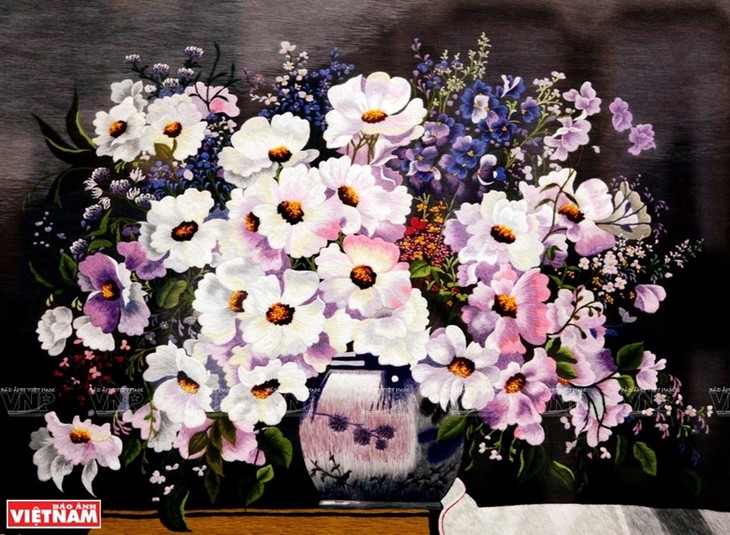 (photo: VNP/VNA) (photo: VNP/VNA) |
 (photo: VNP/VNA) (photo: VNP/VNA) |
The major artworks of Quat Dong village feature many familiar images of Vietnam, including banyan trees, a river wharf, and scenic spots such as One Pillar pagoda, Ngoc Son temple, Hong Thai communal house and Hue’s imperial city.
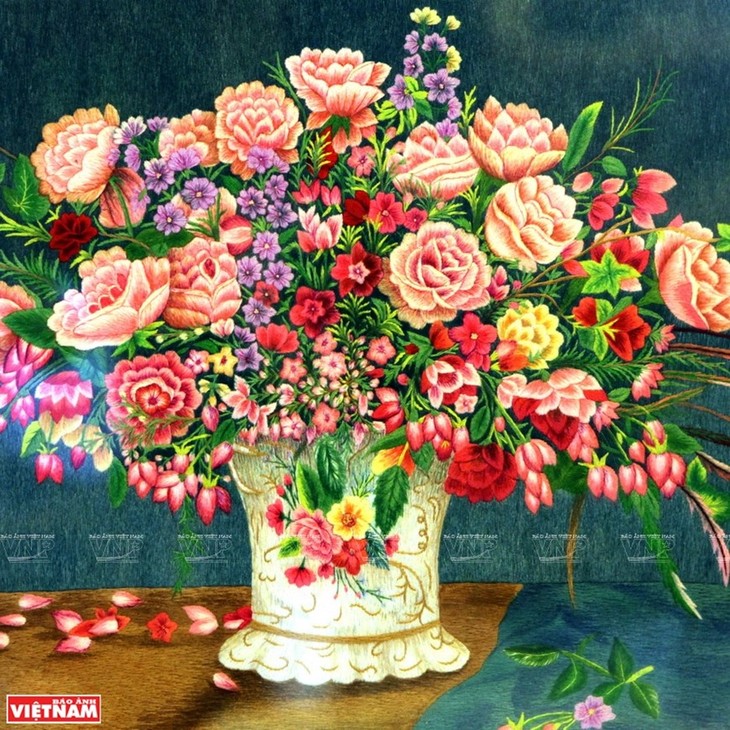 (photo: VNP/VNA) (photo: VNP/VNA) |